Life Begins for Andy Hardy

Brief Synopsis
Cast & Crew
George B. Seitz
Lewis Stone
Mickey Rooney
Judy Garland
Fay Holden
Ann Rutherford
Film Details
Technical Specs

Synopsis
On graduation night in Carvel, Judge James K. Hardy receives a telephone call from New York City. Betsy Booth, the wealthy teenaged granddaughter of his neighbor, is curious about the judge's son Andy because she is coming to Carvel and hopes to have a "grown-up" romance with the newly graduated Andy. The next morning, Andy meets Dr. Waggoner, the president of Wainwright, the judge's alma mater, and worries about the seven years of college it will take to become a lawyer. After Andy says goodbye to his high school sweetheart, Polly Benedict, he ponders the future and convinces his parents to allow him to go to New York for the summer to see if he prefers work to college. After driving to the city with Betsy, Andy registers at a single men's hotel and learns about an office boy job at a stocks and bond firm from Jimmy Frobisher, an aspiring dancer who is vacating Andy's room. When applying for the job, Andy meets attractive Jennitt Hicks, a gold digger who gets Andy to buy her perfume and pay her cab fare home. Two weeks later, Andy is still unemployed, but writes his parents that he is working and convinces Jennitt to back him up if anyone calls. One night, Betsy finds Andy in the park, broke, hungry and disheveled, but he refuses her offers of help. After she leaves, Andy runs into Jimmy, who has been reduced to sleeping in the park. Andy sneaks Jimmy into his room, and, after paying the rent, is left with only twenty-five cents. Meanwhile, the kindhearted Betsy calls Judge Hardy to let him know that Andy is broke, and the judge decides to go to New York. A short time later, Jimmy gets a call about a dancing job, and Jennitt tells Andy that he has just gotten the office boy job. The next day she takes him under her wing and even buys him dinner when he passes out from hunger. Returning home that night, Andy finds Jimmy dead. Although it appears at first to be suicide, a doctor later reveals that Jimmy had a weak heart and died after the exertion of his dance audition. Andy pays for Jimmy's funeral with money borrowed on the car he got for graduation. At the office, Andy's boss, Mr. Maddox, is about to fire him for mixing up some letters, but is so impressed with Andy's honesty that he instead gives him tickets to a charity ball. The judge then arrives from Carvel and, after seeing Jennitt, advises Andy to be faithful to the girl whom he may someday marry. The judge goes to see Betsy and they conclude that Andy's infatuation with Jennitt is keeping him from going to college. Determined to keep Andy from being led astray by a "Wolfess," Betsy finds that Jennitt's fox coat was charged to an attorney named Paul McWilliams. Then, posing as the bearer of a singing telegram, Betsy confronts the lawyer. That night, when Andy takes Jennitt home from the charity ball, McWilliams shows up, angry that Jennitt, to whom he was once married, has charged the coat to his account. After McWilliams leaves with the coat, Andy is disillusioned with Jennitt. The next day, Betsy is met at the Carvel station by the judge, who is immediately summoned by garage owner Peter Dugan. There they find Andy working on his old jalopy. Realizing that he is now almost a man, Andy plans to get his new car paid off by working at the garage until September, then follow in his father's footsteps at Wainwright.

Director
George B. Seitz
Cast
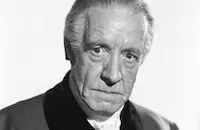
Lewis Stone

Mickey Rooney

Judy Garland

Fay Holden

Ann Rutherford

Sara Haden

Patricia Dane

Ray Mcdonald
George Breakston

Pierre Watkin
Frances Morris
Tommy Kelly
Paul Newlan
Duke York
Byron Shores
Hollis Jewell
Sidney Miller
Roger Daniel
Arthur Loft
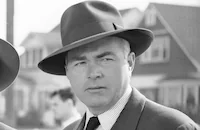
James Flavin
Charlotte Wynters
Robert Pittard
Lester Matthews
Don Brodie
John Harmon
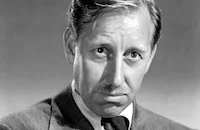
Frank Ferguson
Leonard Sues
George Carleton
George Ovey
Robert Homans
William J. Holmes
Jimmy Zaner

Ann Morriss
Mira Mckinney
Nora Lane
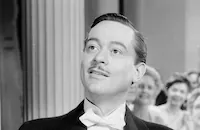
John Eldredge
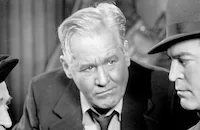
Joseph Crehan
Mary Jo Ellis
Yolande Mollot
Estelle Etterre
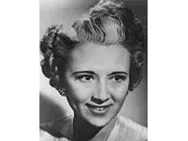
Bess Flowers
Kent Rogers
Purnell Pratt
Gladden James
Crew
Tom Andre
Cedric Gibbons
Agnes Christine Johnston
Kalloch
Harry Mcafee
Douglas Shearer
Art Smith
Georgie Stoll
Elmo Veron
Lester White
Edwin B. Willis

Photo Collections
Film Details
Technical Specs

Articles
Life Begins for Andy Hardy
Following his graduation from high school, Andy heads to New York City to learn about life and prove he can make it on his own. Luckily, he has some stalwart support from old pal and erstwhile romantic interest Betsy Booth (Judy Garland, in her third and last Hardy picture). But he also encounters harsh reality in the form of a glamorous "older woman" coworker with more than office matters on her mind and a down-on-his-luck pal who ends up dead. Nevertheless, the downbeat screenplay managed to end on an optimistic note back in the fictional town of Carvel, with Judge Hardy offering sage advice to his son (this time verging on the controversial subject of remaining "faithful" to his future wife).
Contrary to the squeaky-clean image we have of the Hardy pictures today, this one caused somewhat of a stir beyond the Judge's advice that Andy should stay chaste. The Production Code censors demanded that Andy's ill-fated pal's death be changed from a suicide to a heart attack, and the Catholic Legion of Decency slapped an "objectionable for children" rating on the film because of its mature themes and Andy's affair with a married temptress.
The Hardy series had begun a few years earlier with A Family Affair (1937), based on a play by Aurania Rouverol. That first picture centered around Judge Hardy, played by Lionel Barrymore. Andy was an important but still supporting character, and Mickey Rooney got only fourth billing. The film was such a hit, however, the studio decided to make numerous sequels, replacing Barrymore and Spring Byington with Lewis Stone and Fay Holden as the Hardy parents, roles they would play throughout the rest of the series (although Stone had died by the time the last one was made). By the third film, Judge Hardy's Children (1938), Rooney had achieved star status and top billing, although his character's name wasn't placed in the title until the fourth entry, Love Finds Andy Hardy (1938), which had Garland competing with a young Lana Turner for Andy's affections. Within a couple of years, the Hardy pictures and a series of musicals teaming Rooney and Garland made the young male star one of the top box office attractions in the nation. Such success guaranteed the series would continue, which it did for five more pictures but with diminishing interest and skill, ending with a special reunion story, Andy Hardy Comes Home (1958).
Director George B. Seitz helmed 13 of the 16 Hardy pictures, beginning with the first. Formerly a playwright, Seitz left the theater for Hollywood in 1913, where he wrote screenplays for such action serials as The Perils of Pauline (1914). After a successful career writing and occasionally acting, he moved into directing in the B picture field, with great success. Andy Hardy's Blonde Trouble (1944) was his last picture. He died that year at the age of 56.
In his second movie appearance, as the doomed Jimmy, the young friend whose suicide was transformed to a heart attack by the censors, Broadway dancer Ray McDonald had a role that boded well for his future career. A vaudeville performer at an early age (with his sister Grace) and a featured player on Broadway while still in his teens (in the Rodgers and Hart hit Babes in Arms), McDonald made his screen debut in Down in San Diego (1941). But despite boundless energy, talent and boyish good looks, subsequent good parts were few and far between. He played several second-string roles in MGM musicals such as Babes on Broadway (1941), Presenting Lily Mars (1943) with Judy Garland, and most notably Good News (1947), his last major picture. In 1959, while in New York to appear on a TV show, he accidentally died after choking on food in his hotel room. He was only 37.
Director: George B. Seitz
Producer: George B. Seitz
Screenplay: Agnes Christine Johnston, based on characters created by Aurania Rouverol
Cinematography: Lester White
Editing: Elmo Veron
Art Direction: Cedric Gibbons
Original Music: David Snell
Cast: Mickey Rooney (Andy Hardy), Judy Garland (Betsy Booth), Ray McDonald (Jimmy Frobisher), Lewis Stone (Judge James Hardy), Patricia Dane (Jennitt Hicks).
BW-102m. Closed captioning. Descriptive Video.
by Rob Nixon

Life Begins for Andy Hardy
Quotes
Me, a child! Listen here, Andrew Hardy, my mother just bought me an evening dress that simply has no visible means of support!- Betsy Booth
The next ten years of my life are the best.- Andy Hardy
The next ten years of anybody's life are the best.- Judge Hardy
Trivia
Notes
The working title of this film was Andy Hardy Goes to College. It was originally planned as an early 1941 release, but a Hollywood Reporter news item in December 1940 noted that M-G-M decided to put the story on hold and film Andy Hardy's Private Secretary first. The action of that film ends on the same night that the story of Life Begins for Andy Hardy's opens. The opening title card reads, "Metro-Goldwyn-Mayer presents Judge Hardy's Family in..." and superimposes the words over a picture of the four actors who portrayed the Hardy family members. Cecilia Parker, who portrayed "Marian" in the series, was not in the film, however. In the story, her character is said to be "away." In the opening credits, the cast list ends with "And Judy Garland;" however, the end credits list her third, after Lewis Stone and Mickey Rooney. This was the third and last Hardy Family picture in which Garland, who portrayed "Betsy Booth," appeared. The CBCS lists Ralph Byrd, Manart Kippen, Robert Winkler and William Forrest in the cast, but they were not in the released film. Actor Purnell Pratt, who portrayed "Dr. Storfen" in the film, died in late July 1941. It is unclear whether Life Begins for Andy Hardy or Ringside Maisie (see below), which were shot simultaneously, was his last film. For additional information on the series, consult the Series Index and see the entry for A Family Affair in AFI Catalog of Feature Films, 1931-40; F3.1269.















